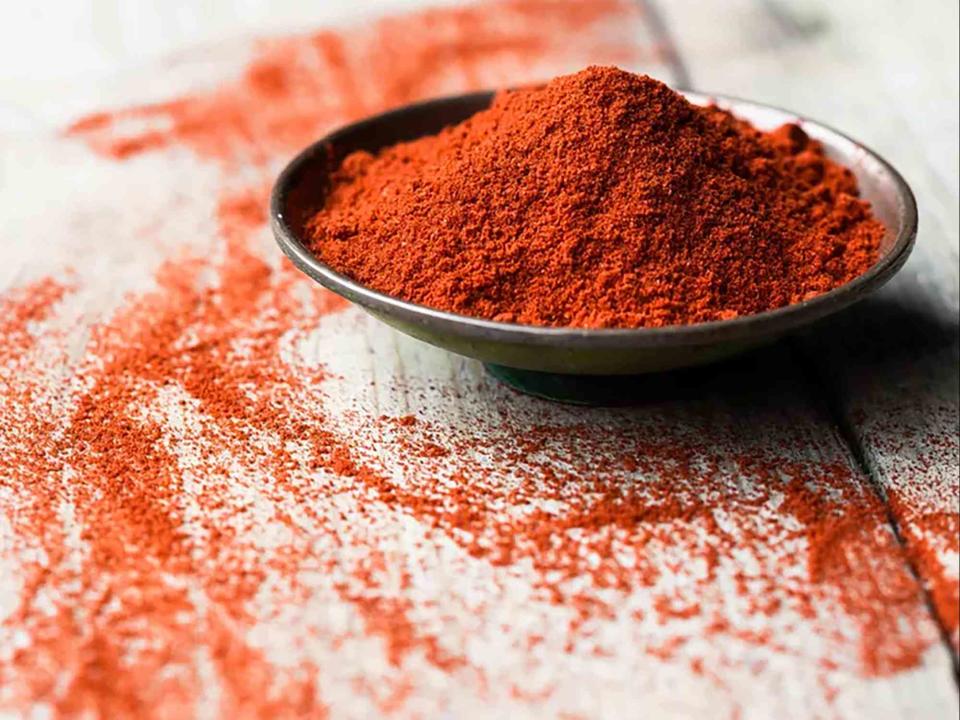This Hawaiian Staple Might Just Become the New It Seasoning
Add a sweet, sour, salty sprinkle to everything from fruit and donuts to shaved ice and cocktail rims.

QUANTHEM/GETTY IMAGES
Spin the globe, place your finger where it lands, and chances are high that the area has at least one spice blend that's synonymous with the cuisine. From the first sprinkle, these seasonings take locals back to their childhood. Caribbean jerk seasoning. Egyptian dukkah. French Herbes de Provence. Japanese shichimi togarashi. Indian garam masala. Mexican Tajín.
In Hawaii, that signature seasoning is li hing mui powder, which has been a staple in homes and at restaurants across the Hawaiian Islands for more than 100 years.
Read on to learn more about this signature spice, plus where to find it and how to use it.
What Is Li Hing Mui Powder?
Li hing mui is a small, salted dried plum that's native to China. Roughly translated from Cantonese, the name means "traveling plum," a nod to the fact that the fruits are ideal to pack as snacks. Simply suck on the flesh portion and toss the seed for a quick energy boost. In Guam, the plums are "sweet and sours," which gives a nice summary of their flavor: equal parts sweet, salty, and tart. In addition to being dried, these plums are pickled. Today, that combo includes a mixture of licorice, red food coloring, salt, sugar, and sometimes other sweeteners.
Back to the origin story: The fruit made its way to Hawaii in the 1800s or early 1900s. At that time, immigrants who worked on sugar plantations brought it to the islands to enjoy in the fields and at home. The fruit would remind them of the home they departed to pursue better opportunities.
After the fruit landed stateside, it was transformed into an even more versatile product: Li hing mui powder, which is made by grinding up the fruit. If you spot "li hing" on a menu, it's highly likely this is referring to the powder, rather than the fruit. For many Hawaiians, the distinct flavor tastes like home. For the uninitiated, you can think of it as a milder, sweeter cousin of Tajín.
Related: Say Aloha to Our Best Hawaiian Recipes
How to Use Li Hing Mui Powder
Just like there are many ways to use Tajin, options abound for how to use li hing mui powder.
Here are a few ideas to kick things off. Don't feel limited to sticking to these, though—feel free to get creative and use the seasoning in any recipe that could benefit from a little sweet and tangy kick.
Sprinkle it on pineapple, mango, apples, grapes, watermelon, strawberries, or any moist fruit.
Use it to coat gummy bears.
Dip cocktail glasses in citrus juice, then li hing mui powder to rim the glass.
Mix 1 tablespoon li hing mui powder with 1/2 cup sugar to use as a coating for monkey bread-bound biscuit dough, croissant cones, or to dust warm, fresh-from-the-fryer donuts. (In Hawaii, li hing mui powder is a common coating for the malasadas, a popular kind of Portuguese-style donut).
Sprinkle it over shaved ice.
Where to Buy Li Hing Mui Powder
In Hawaii, you'll find li hing mui powder on the shelves at many local shops known as "crack seed stores," at many supermarkets, and even in the gift shop at the Dole Plantation. If you live in the continental U.S., you'll have the easiest time getting the goods online (although booking a flight to Hawaii and snagging this as a souvenir doesn't sound like a bad idea!).
Find dried li hing mui fruit, candy made with it or a syrup that's infused with it, or li hing mui powder from these online retailers:
You can also order li hing mui powder from Amazon or Walmart.

